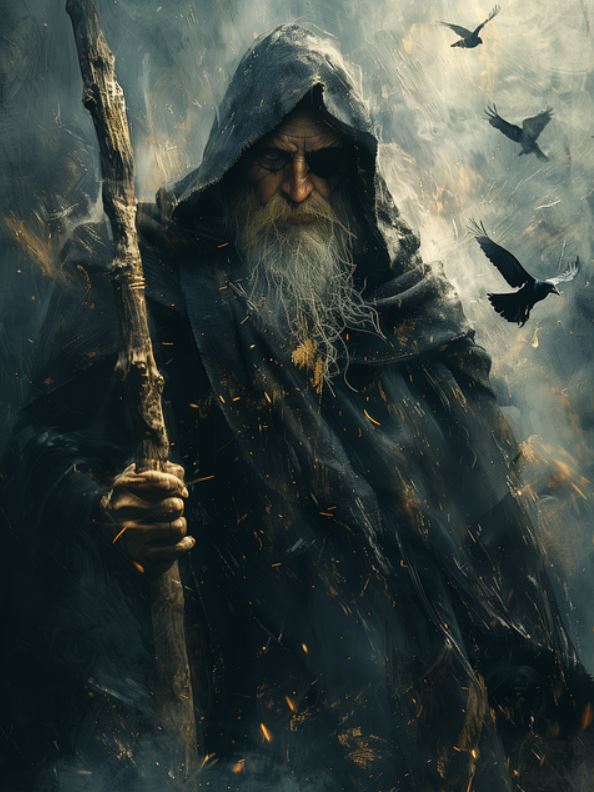Æhtemen
English 🏴
Runology
Folklore and Herblore
English myth
Community chat: https://t.me/hamster_kombat_chat_2
Website: https://hamster.network
Twitter: x.com/hamster_kombat
YouTube: https://www.youtube.com/@HamsterKombat_Official
Bot: https://t.me/hamster_kombat_bot
Last updated 9 months, 2 weeks ago
Your easy, fun crypto trading app for buying and trading any crypto on the market.
📱 App: @Blum
🤖 Trading Bot: @BlumCryptoTradingBot
🆘 Help: @BlumSupport
💬 Chat: @BlumCrypto_Chat
Last updated 1 year, 3 months ago
Turn your endless taps into a financial tool.
Join @tapswap_bot
Collaboration - @taping_Guru
Last updated 10 months ago

Canterbury Museum rightly calls this Anglo-Saxon mount a raven head, pointing out the bird head in the centre of the piece in gold, looking left. However we know that the Raven was often shown with a very curved beak which can be seen on the right side of the mount. There are two birds here - one a raven and the first (left looking) bird, is possibly another raven or even an eagle. Both birds are connected with Woden.

STJ's documentary rightly connects the fylfot as Woden's symbol, or at least as being Wodenic one. Folklorist and author Nigel Pennick, in the Journal of Geomancy (vol. 3 no. 4, July 1979) calls the swastika a symbol of Woden.
The image above shows the swastika on the wheels of Thor's chariot. This statue of Thor sits on top of the Ny Carlsberg beer house, who prior WW2 used the swastika as their symbol - as did many companies including Coca-Cola, the Scouts and National War Savings (UK WWI).

interesting Isle of Man London Midland & Scottish (LMS) Railway Poster from the 1920's

Insight into Anglo Saxon ancestor worship and offerings, from period accounts of Christian monks:
Penitential of Theodore, 7th Century:
“He who causes grains to be burned where a man has died, for the health of the living and of the house, shall do penance for five years”.
Confessional of Egbert, 8th Century:
“Anyone who burns grain in the place where a dead man lay, for the health of living men and of his house (shall do one year of fasting)”.
The 10th Century Writings of Alfric told priests not to “eat or drink in the place where the corpse lies, lest you are imitators of the heathenism which they practice there”.

'Eofor-līc scionom, ofer hlēor-bergan: gehroden golde, fāh ond fýr-heard, ferh wearde hēold: gūþ-mōd grummon'.
Boar-shapes shone over the cheek-guards adorned with gold,gleaming and fire-hard; keeping guard of life, raging with warlike spirit. Beowulf (303-306)
Art - Iwobrand

'It was seen that he was sigoreadig, blessed with victory-bringing luck, bestowed upon him by his ancestor Woden, one-eyed bringer of victories.'
Cynric being described as sigoreadig in 'The coming of the king'. OE sigoreadig - 'blessed with victory'.
Image - Cynric - Second King of Wessex by Caito Junqueira

Ale is an option for making offerings to the gods (a libation) – especially for Woden the Alugod. Ale is associated with the runic formula ALU (though this is debated), but is believed by some to be connected with the OE Ealu (ale) and perhaps the PGmc Aluh – an amulet for protection.

Two month names are recorded for November. Bede writes November was called Blōtmōnaþ (Blot-Month) 'the month of blood-offerings'...'for it was in this month that the cattle which were to be slaughtered were dedicated to the gods.'
The Old English Martyrology recorded the month as Blōdmōnað (Blood-Month).
Both names are linked as Blōt was a 'blood sacrifice' and is where the christians get their word 'blessing' from, as the Old English word for blessing was bletsian / bledsian, from the Proto-Germanic *blōdisōn 'hallow with blood'.

Some of Woden’s bynames reveal his darker side, for he is also known as the Gallow’s Burden. Hangaguð and Hangatýr are his titles as God of the Hanged. His name Bǫlverkr means Evil-Doer. Woden also gave himself the name Sváfnir, after one of the Serpents who dwell at the roots of the Great Ash – Sváfnir meaning Sleep-bringer.
Calling the gods according to our heritage. These aren’t all, but to name a few…
Óðinn (Odin) = Wóden
Þórr (Thor) = Þunor (Thunor)
Freyr = Fréa (Seaxnéat) (Ing)
Frigg = Fríġe
Freyja = Frówe
Baldr = Bældæġ
Heimdallr = Háma
Völundr = Wéland
Mímir = Mimor
Urðr = Wyrd
Community chat: https://t.me/hamster_kombat_chat_2
Website: https://hamster.network
Twitter: x.com/hamster_kombat
YouTube: https://www.youtube.com/@HamsterKombat_Official
Bot: https://t.me/hamster_kombat_bot
Last updated 9 months, 2 weeks ago
Your easy, fun crypto trading app for buying and trading any crypto on the market.
📱 App: @Blum
🤖 Trading Bot: @BlumCryptoTradingBot
🆘 Help: @BlumSupport
💬 Chat: @BlumCrypto_Chat
Last updated 1 year, 3 months ago
Turn your endless taps into a financial tool.
Join @tapswap_bot
Collaboration - @taping_Guru
Last updated 10 months ago